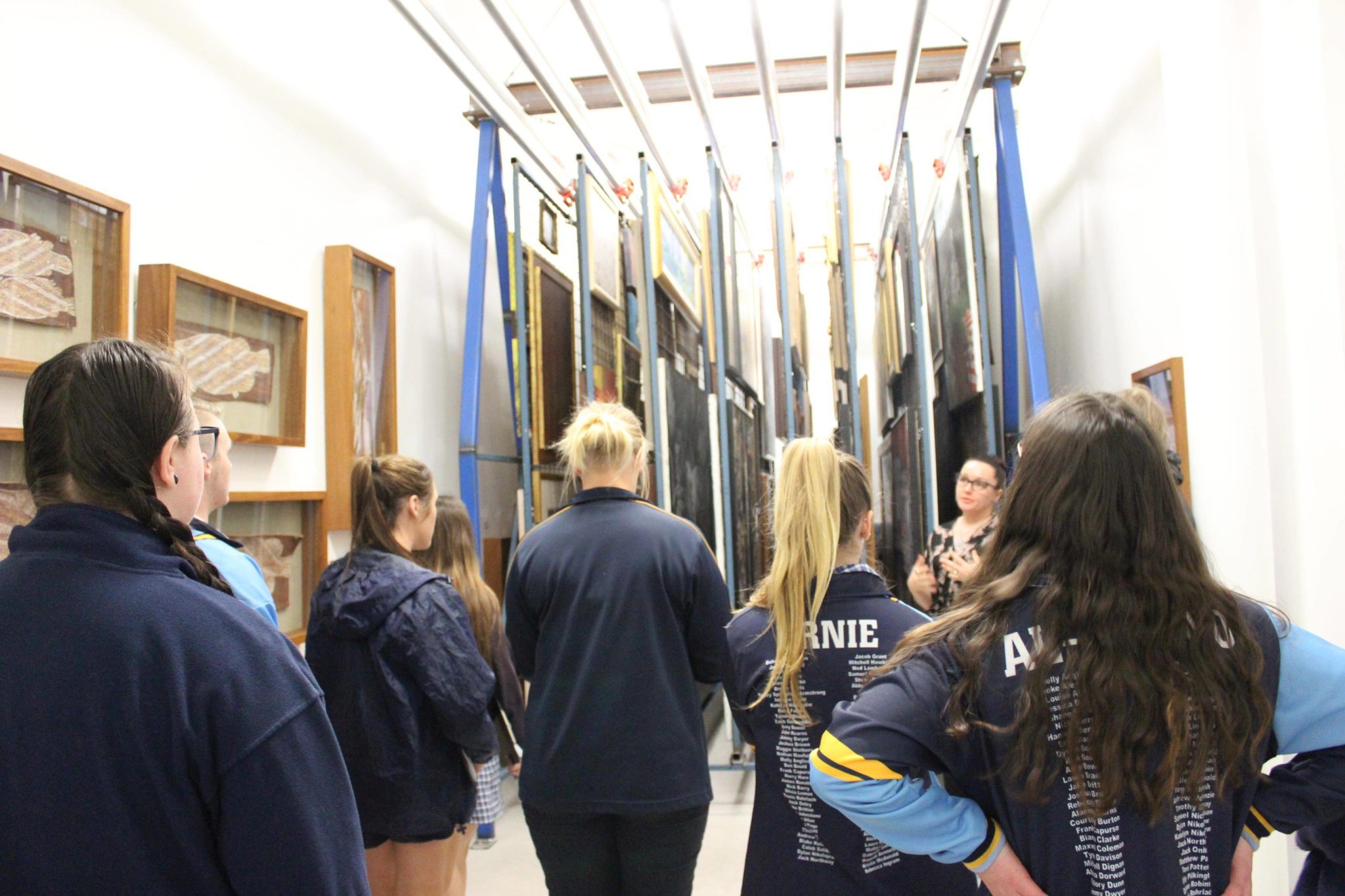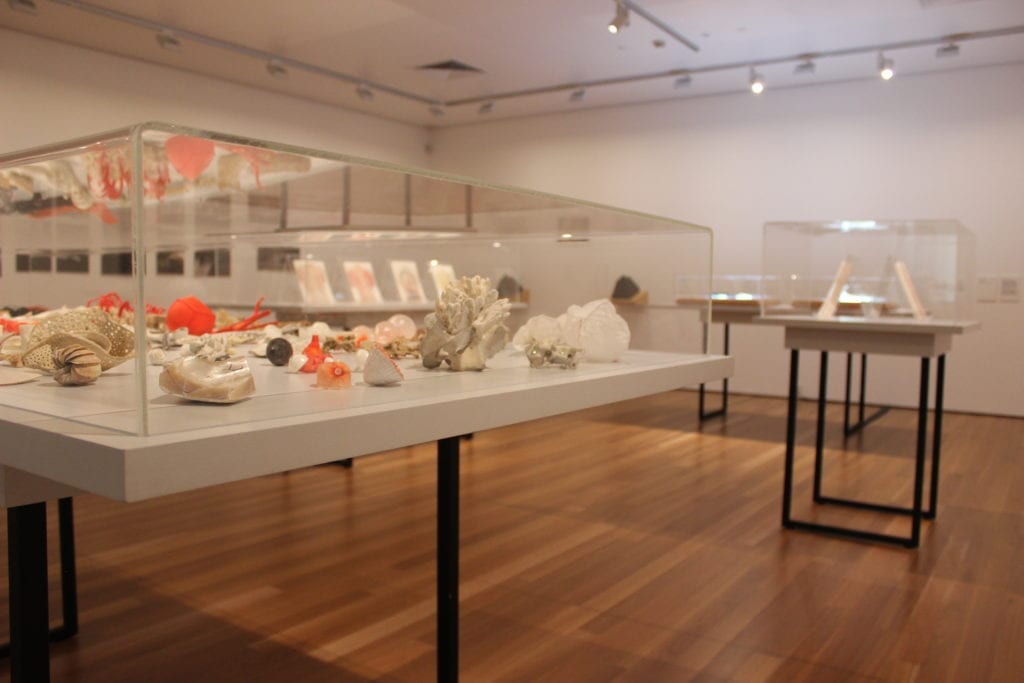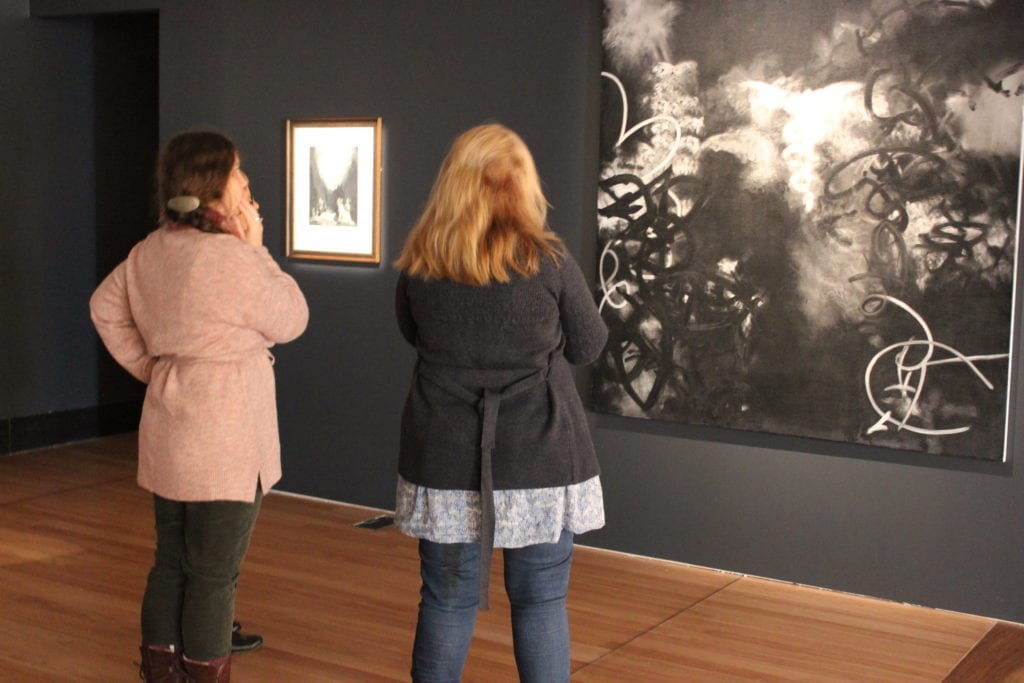
Image credit: Latrobe Regional Gallery’s Education and Public Programs Officer Nicole Brindley showing students through the back of house painting storage areas.

Image credit: Exhibition documentation, Vessel – A Voyage, A solo exhibition on the work of Kevin White, 27 July to 27 October 2019, Gallery 5, Latrobe Regional Gallery.

Image credit: Exhibition documentation, JamFactory ICON: Catherine Truman: no surface holds, 9 November 2019 to 16 February 2020, Gallery 6. Latrobe Regional Gallery.

Image credit: Patrons viewing works in Morning, Noon And Night: Selected works from the Cbus Collection of Australian Art, 13 July to 13 October 2019,Gallery 1 & 2. Latrobe Regional Gallery.
LRG EDUCATION
Aspects Of Conservation
VCE Studio Arts Unit 4 Area of Study 3: Art industry contexts
♦♦♦
PREVENTATIVE CONSERVATION
Latrobe Regional Gallery (LRG) are custodians of a significant permanent collection of more than 1400 works including paintings, works on paper (prints, watercolour, photographs etc), small objects, large sculptures, and digital media, as well as custodians for over 300 paintings and barks in the Cbus collection of Australian Art. LRG is dedicated to preserving the works in our collection to Australian museum standards. Good conservation practise in an art gallery or museum is apparent by its absence – if sound conservation practises are being followed, they will not be detected by the public. However, an absence of good conservation practise in an art gallery of museum is clearly evident in the poor condition of the collection e.g. Paintings crumbling, damp spots, cracking furniture.
The distinction between conservation and preventative conservation is described by the International Council of Museums Committee for Conservation (ICOM-CC) as follows:
CONSERVATION
All measures and actions aimed at safeguarding tangible cultural heritage while ensuring its accessibility to present and future generations. Conservation embraces preventive conservation, remedial conservation and restoration. All measures and actions should respect the significance and the physical properties of the cultural heritage item.
PREVENTIVE CONSERVATION
All measures and actions aimed at avoiding and minimizing future deterioration or loss. They are carried out within the context or on the surroundings of an item, but more often a group of items, whatever their age and condition. These measures and actions are indirect – they do not interfere with the materials and structures of the items. They do not modify their appearance. Examples of preventive conservation are appropriate measures and actions for registration, storage, handling, packing and transportation, security, environmental management (light, humidity, pollution and pest control), emergency planning, education of staff, public awareness, legal compliance.
LRG’s curatorial and technical team provide knowledge and advice on preventative conservation although all staff from the Director through to the front desk officers are responsible for looking after the collection. Conservation of artwork is not conducted in house, but outsourced externally via institutions such as the Australian Institute for the Conservation of Cultural Material (AICCM), where highly trained conservators conduct the work.
As Part of LRG’s preventative, conservation strategy inspections and checks for environmental damage are routinely monitored. These checks include environmental issues such as light (visible and non-visible) including the use of LED lights to reduce UV exposure, and light leaks from windows and doorways (usually taken into consideration during the curation and exhibition design processes); moisture, humidity and extreme changes in temperature are checked daily in the digital monitoring program for the air conditioning system; dirt, dust and insects routinely inspected during walk throughs of the galleries and storage spaces; and people are regularly monitored on security cameras by staff at the front desk and office space, as well as staff walking through to monitor the spaces when necessary.
REFERENCES
http://www.icom-cc.org/
https://aiccm.org.au/
https://latroberegionalgallery.com/
http://www.cbusartcollection.com.au/
Latrobe Regional Gallery's Education and Public Programs are generously supported by Opal.
